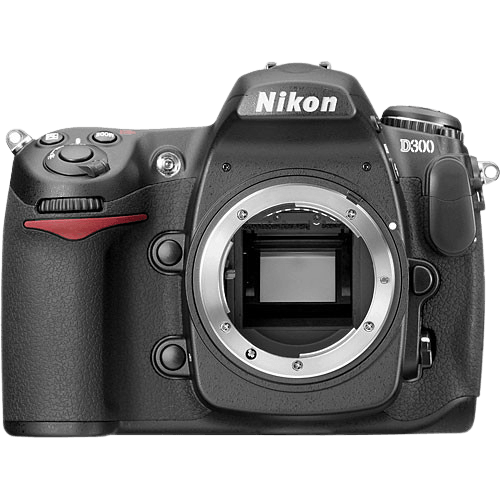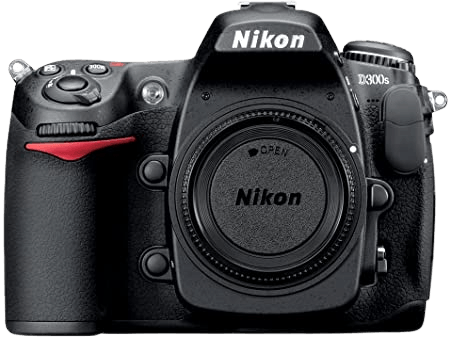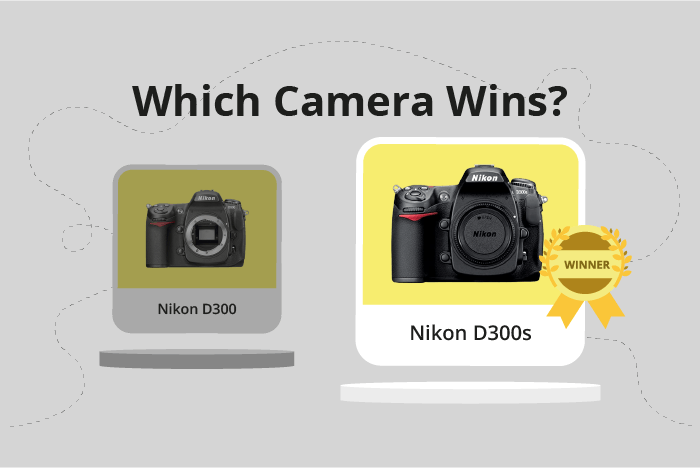Nikon D300 vs D300s Comparison
Nikon D300

Nikon D300s

The Nikon D300s takes the lead with a score of 53/100, while the Nikon D300 trails behind at 49/100. Both cameras are DSLR models, featuring the same dimensions of 147 x 114 x 74mm. They share similar weight, with the D300s being slightly heavier at 938g compared to the D300’s 925g.
The D300s outshines the D300 with its newer release year of 2009, as opposed to the D300’s 2007 launch. Consequently, the D300s boasts a higher launch price of $1815, compared to the D300’s $1540.
While the D300 may have a lower score, its lighter weight and lower price tag could make it more appealing to budget-conscious photographers. However, the D300s remains the clear winner in terms of overall specifications and performance.
Nikon D300 vs D300s Overview and Optics
The Nikon D300s takes the lead in optics with a score of 50/100, outperforming the Nikon D300 by 3 points, which scored 47/100. Both cameras share several specifications, including a 12.3-megapixel CMOS sensor, Expeed processor, APS-C sensor size, Nikon F DX lens mount, and lack of image stabilization.
The D300s excels in shooting speed and sensor performance. It offers a faster shooting speed of 7 frames per second compared to the D300’s 6 frames per second, providing more flexibility for capturing fast-moving subjects or action shots. Additionally, the D300s has a higher DXOMARK sensor score of 70, indicating improved image quality and low-light performance compared to the D300’s score of 67.
The D300, although trailing the D300s, still holds its ground in certain areas. With a slightly lower score, the camera remains a viable option for photographers on a budget or those seeking a more affordable option without sacrificing too much on optics quality.
Comparing the optics of both cameras, the Nikon D300s emerges as the superior choice due to its faster shooting speed and better sensor performance. However, the Nikon D300 remains a valuable option for those prioritizing affordability while still delivering decent image quality. Ultimately, the decision between these two cameras will depend on the individual photographer’s needs and preferences.
Nikon D300 vs D300s Video Performance
In comparing the Nikon D300 and Nikon D300s, it is important to note that neither camera possesses video capabilities. As a result, their video scores are non-existent. This lack of video functionality does not affect the overall quality of the cameras, but it is a feature that is absent in both models.
Nikon D300 vs D300s Features and Benefits
The Nikon D300 and Nikon D300s both have a feature score of 54/100. These cameras share several similarities in their specifications, such as a 3-inch screen size, no touchscreen, no flip screen, no GPS, no WIFI, and no Bluetooth. However, there are differences between the two models that make one better than the other in certain aspects.
In terms of screen resolution, the Nikon D300 has a slightly higher resolution at 922,000 dots, compared to the Nikon D300s’ 920,000 dots. This difference may not be significant, but it does give the D300 a slight edge in terms of image display quality.
The Nikon D300s, however, does not have any specific advantages over the Nikon D300 in terms of features. Both cameras have the same limitations and lack of modern connectivity options, such as Bluetooth or WIFI. This may be a disadvantage for some users who prefer to have these features in their cameras.
Given that the feature scores are equal and the only difference is the slight advantage in screen resolution for the Nikon D300, it is fair to say that these cameras are almost identical in terms of features. It is important for potential buyers to consider other aspects, such as performance, image quality, and price, when deciding between these two camera models.
In this comparison of features, neither camera emerges as a clear winner. Both the Nikon D300 and Nikon D300s have their strengths and weaknesses, and ultimately, the choice between them will depend on individual preferences and priorities.
Nikon D300 vs D300s Storage and Battery
The Nikon D300s wins in the storage and battery category with a score of 76/100, while the Nikon D300 trails behind at 43/100. Both cameras share some common specifications, such as using the same battery type EN-EL3e and lacking USB charging capabilities.
The D300s stands out with its dual memory card slots, accepting both SD/SDHC and Compact Flash cards. This feature allows for greater flexibility and increased storage capacity. On the other hand, the D300 only has a single memory card slot, accepting Compact Flash Type I or II cards.
However, the D300 has a slightly longer battery life of 1000 shots compared to the D300s, which offers 950 shots per charge. This difference may be minor, but it can be advantageous for photographers who prioritize battery longevity.
Taking these factors into consideration, the Nikon D300s proves superior in terms of storage options and flexibility, while the D300 offers a marginally better battery life. Ultimately, the choice between these cameras will depend on the user’s specific needs and preferences.
Nikon D300 vs D300s – Our Verdict
Are you still undecided about which camera is right for you? Have a look at these popular comparisons that feature the Nikon D300 or the Nikon D300s:

